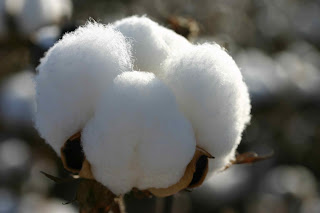When people think of cotton, they think of a natural, wholesome textile. Cotton is the most commonly used natural fiber and is in nearly 40% of our clothing. However, cotton is one of the most unsustainable crops in the textile industry. It consumes copious amounts of water, and is one of the most chemically dependent plants. Only 2.4% of the world’s crops are cotton, but they require 10% of the agricultural chemicals and 25% of insecticides. There are genetically modified cotton crops that are resistant to insects that now make up about 20% of the world’s cotton crops.
Cotton is grown all over the world, with China, India, and the U.S. being the number one producers. However, the crop can have drastic effects on the environment. This is an extreme example, but Uzbekistan shows us how cotton can destroy the environment. The country is the 6th largest grower of cotton. In the 50s, two rivers called the Amu Darya and the Syr Darya were forged from the Aral sea to irrigate cotton crops. Now, the water levels of the Aral are less than 10% of what they used to be, and the sea has become over-salinated and over-burdened with pesticides and chemicals used for the crops. Surrounding communities have suffered because they can not benefit from the sea or the rivers.
A suggested alternative organic cotton. In 2011, it was reported that organic cotton was 0.7% of the global cotton cropland. It is grown using methods and materials that do not impact the environment drastically. There are some apparel companies that have developed programs that use only 100% organic cotton, or at least try and blend organic cotton into their products. While organic cotton is slightly better option for the environment than conventional cotton, it is much more expensive to grow. It also still requires copious amounts of water, and if grown overseas or dyed, it can have a substantial carbon footprint.
For more information about cotton, please visit these links:




No comments:
Post a Comment